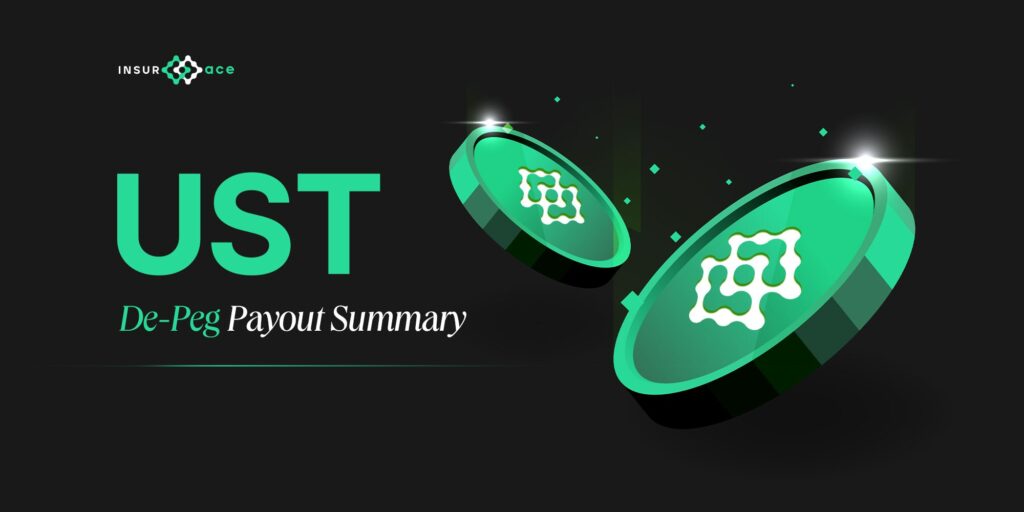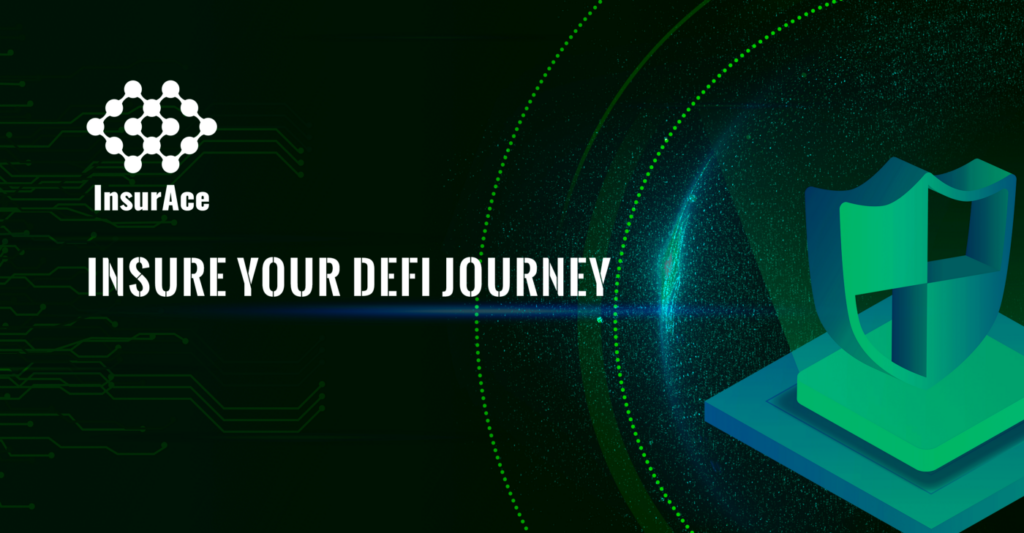With over $40bn worth of losses, 73 ecosystem projects halted, and thousands of institutional & retail investors worldwide facing possible financial ruin, the TerraUST de-peg event indeed, sent systemic shockwaves throughout the crypto world.
The decentralized finance (DeFi) Insurance industry was called to action at a scale that would shake centuries old TradFi Insurance conglomerates to the core.
Prominent Crypto Insurance protocol, InsurAce has led the way, okaying nearly $12million in payouts to claimants who bought the TerraUST De-Peg policy covers ahead of the catastrophic crash.

On May 7, 2022, the price of the then $18-billion market cap algorithmic stablecoin terraUSD (UST), which is supposed to maintain a $1 peg, started to wobble. By May 9, it fell to 35 cents, as sister token, LUNA, which was meant to stabilize UST’s price, catastrophically dropped from $80 to near zero by May 12.
Three weeks down the line, the responses of the major DeFi insurance protocol have been quite polarizing. Platforms like Unslashed Finance initially delayed payouts, whilst others like Nexus Mutual did not offer a De-Peg product. InsurAce has since taken the lead to intervene by moving to compensate insured losses in their largest payout to date.
Over the last few years, the DeFi insurance industry has evolved to provide Cover to investors in diverse blockchain protocols against major DeFi risks while adhering to the core cannons that have guided TradFi insurance for centuries.
Some of the main insurable risks in DeFi include Smart Contract hacks, Custodian risk, NFT theft risk, and the dreaded Stablecoin De-Peg risk.
In June 2021, the first high-profile DeFi bank run occurred when Iron Titanium token (TITAN) – the native token of a DeFi protocol, Iron Finance, that was once worth $2 billion – fell to near zero.
Algorithmic stablecoins have been under intense scrutiny since inception. And the TITAN de-peg event gave credence to the concerns of the many blockchain analysts who have highlighted the heightened de-peg risks that algorithmic stablecoins carry, by design.
Following this event, the demand for insurance covers grew exponentially across different DeFi Insurance protocols with Stablecoin de-peg risk Covers making up a significant portion.

InsurAce’s Timely Intervention Helped Prevent Total Loss to Individuals.
Within days, the TerraUST de-peg event threatened a systemic contagion collapse in the crypto industry. The top two most valuable Centralized & Collateralized stablecoins USDT (Tether) took massive hits. USDT spectacularly wobbled below 95 cents as Tether faced redemption requests for over $10 billion (12% of circulating capital) within a turbulent 7-day period.
While crypto analysts and TerraUST holders worldwide struggled to come to grips with the drastic turn of events, the timely intervention of InsurAce during the astonishing event has played a significant role in restoring investor confidence.
On May 13, barely 48 hours after the UST de-peg event, InsurAce set the loss Claims process for UST investors in motion through an official statement released on its website. The statement contained a user guide that provided clarity on Coverage specifications and Claims Eligibility.
“The UST De-Peg cover has officially been triggered by InsurAce.io as of 5:00am UTC on 13th May 2022 following a TWAP of UST below $0.88 as per our terms and conditions of cover.”
– InsurAce statement (May 13, 2022).
The statement further outlined the standard process for users who had suffered losses in the UST de-peg event to file claims for maximum cover indemnification.
InsurAce Takes Huge Losses to Bailout TerraUST Holders
InsurAce drew praise globally for providing timely assistance for covered TerraUST investors without complex long-drawn-out litigation processes that have become synonymous with the TradFi insurance sector.

An in-depth look into the underlying data showed that the DeFi protocol had taken a significant hit in the process. According to an updated report published by the InsurAce Advisory Board, the platform has estimated ~$11.7million in UST de-peg claims.

During a recent interview with Cryptoslate, InsurAce Chief Marketing Officer (CMO), Dan Thomson, responded by reiterating the platform’s commitment to fostering a safer DeFi environment.
“This is why we founded InsurAce – to make crypto safer for everyone. And this shows the importance of insurance in the industry and in any smart investor’s strategy,” said Thomson.
He then went ahead to assure stakeholders that the platform would “payout and recover fast.”
InsurAce Responds to Ensuing Criticism.
InsurAce came under fire for seemingly arbitrarily reducing the ‘claims period’ for the UST stablecoin de-peg event. This meant that UST holders who bought the Cover had only seven days to file claims in line with the process outlined in the May 13th statement.
“It is in our terms of service to make such changes. We also felt there was no point in delaying the process on behalf of those who lost money and stakers who would have to pay out claims,” said Thomson.
“We want the best for everyone here. And if this were TradFi insurance, people would be stuck in litigation for months or years,” he added.
InsurAce has since concluded the Voting process, which saw a total of 155 UST de-peg Cover claims accepted and 18 rejected as not ineligible for the cover terms and conditions. The decentralized voting was conducted by InsurAce’s community of Claims Assessors who hold and stake $INSUR Tokens.
Uniquely, InsurAce has offered a Stakers Compensation Plan to help reduce losses to those investors in the platform that have had their assets used as part of this payout.
From a professional perspective in insurance industry, such large claim is a perfect touch-stone for an emerging insurer. With effective claim pay-out, it is an extremely positive move for building up long-term credibility and trust of the insurer brand.
This has truly been a huge test for DeFi insurance and the whole crypto community, with all eyes on InsurAce and the implications for insurance within this emerging industry.

